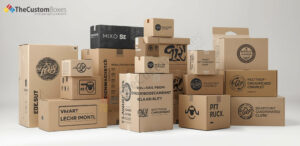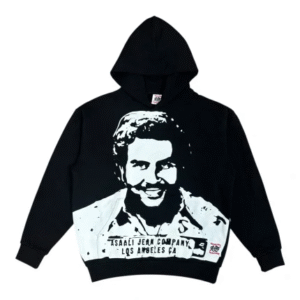
Introduction
So, you’ve joined the proud community of Pfaff embroidery machine owners. You’ve mastered the basics, stitched out the built-in designs, and now you’re ready for the next step: creating your own custom embroidery. You find a perfect image online, but when you go to load it, your machine doesn’t recognize the file. That’s because Pfaff machines, like all major brands, speak their own specialized language—in this case, the .PXF file format. This is where understanding a PXF file converter becomes your superpower. Navigating the world of file conversion might seem technical, but it’s the essential key to unlocking a universe of personalized projects. This guide will walk you through everything, from what a PXF file actually is to how you can expertly convert your favorite images into beautiful, stitch-ready designs your Pfaff will love.
What is a PXF File and Why Does Your Pfaff Need One?
Think of your Pfaff embroidery machine as a brilliant but very precise robot. It can’t simply look at a JPEG or PNG and know what to do. It needs a detailed set of instructions written in a language it understands. For most modern Pfaff machines, that native language is the PXF format.
A PXF file is much more than an image; it’s a sophisticated digital blueprint that tells your machine exactly how to create a design. It contains all the critical commands, including:
-
Stitch Types and Order: The precise sequence of where to place every single stitch—whether it’s a satin stitch for outlines, a fill stitch for large areas, or a running stitch for fine details.
-
Thread Color Changes: Exact codes that signal the machine when to pause so you can change to the next color in the sequence.
-
Machine Functions: Instructions for trims, jumps between sections, and even stitching order to optimize stability and minimize thread breaks.
-
Design Information: Data like the design size, number of stitches, and recommended hoop.
You can’t just rename a picture file to “mydesign.pxf” and expect it to work. A true PXF file converter or digitizing software is needed to translate the visual information of an image into this complex stitch-based language.
Preparing Your Image for PXF File Converter
The journey to a perfect embroidery starts long before you even open your software. The quality of your source image is the single biggest factor in determining the quality of your final stitched design. Garbage in, garbage out, as the saying goes.
Choosing the Right Image:
Start with simple, bold graphics. Logos, line art, and strong silhouettes are ideal candidates. Avoid highly detailed photographs or images with subtle gradients, as these are incredibly difficult to translate into stitches and often result in a messy, confusing design.
Pre-Conversion Image Editing:
A few quick edits in a free program like GIMP, Canva, or even Microsoft Paint can make the conversion process infinitely smoother.
-
Crop and Focus: Zoom in on the core element you want to stitch. Remove any unnecessary background clutter.
-
Adjust Contrast: Crank up the contrast to make the edges of your design sharp and well-defined. This helps the software distinguish between different parts of the image.
-
Simplify: Remove tiny text or minute details that are smaller than a few millimeters. These will not stitch out well and can cause thread breaks or a cluttered look.
-
Convert to Grayscale (Optional): Sometimes, removing color allows you to focus purely on the shapes and contrasts, which is the foundation of good digitizing.
Taking ten minutes to prep your image can save you an hour of frustration trying to clean up a poorly converted file.
Your Conversion Toolkit: Software Options for Creating PXF Files
You have several paths to get from your prepared image to a ready-to-stitch PXF file. The best choice for you depends on your budget and how deeply you want to dive into the craft of digitizing.
Option 1: Pfaff Creative Embroidery Software
Pfaff offers its own professional-grade software suite, like the Pfaff Creative™ line. This is the native, most powerful solution.
-
Pros: It’s built specifically for Pfaff machines, guaranteeing flawless compatibility and access to all unique features. It offers unparalleled control over every aspect of the digitizing process.
-
Cons: This is a significant financial investment and comes with a steep learning curve. It’s geared toward serious hobbyists and professionals.
Option 2: Third-Party Digitizing Software
Many excellent third-party programs support the PXF format. Popular options include Hatch Embroidery, Embrilliance, and Brother’s PE-Design.
-
Pros: These often have more accessible pricing tiers (Hatch, for example, offers a subscription model). They are incredibly powerful and user-friendly, often featuring great auto-digitizing tools for beginners.
-
Cons: Requires research to ensure full PXF compatibility. There’s still a learning curve, though many have large user communities and tutorials.
Option 3: Online Conversion Services
For those who need a one-off design without buying software, online PXF file converter services are available.
-
Pros: Fast, convenient, and no software to learn. You upload an image, pay a fee, and download the converted file.
-
Cons: You surrender all creative control. The quality can be hit-or-miss, and you cannot tweak or adjust the design yourself. It’s also less cost-effective if you plan to create many designs.
Beyond the Convert Button: Essential Digitizing Settings
Whether you use an auto-digitizing function or manual tools, understanding a few key concepts will transform your results from amateur to professional.
-
Stitch Density: This controls how closely packed the stitches are in a filled area. Too sparse, and the fabric will show through (gapping). Too dense, and the design can become stiff, cause puckering, and even lead to needle breaks. Different fabrics require different densities.
-
Underlay: This is the foundation of your embroidery. Underlay is a series of stitches laid down before the top stitching. It stabilizes the fabric, prevents puckering, and helps the top stitches sit smoothly on the surface. Never skip the underlay!
-
Pull Compensation: Fabric stretches and moves under the pressure of the needle and thread. Pull compensation actively accounts for this by slightly widening shapes in the digital file so they contract into the correct size and shape once stitched. This prevents unsightly gaps between different sections of color.
-
Stitch Direction: The direction of the stitches within a shape greatly affects the final look. Changing the angle can change how light reflects off the thread, creating depth and texture, and can also improve the stability of the design on stretchy fabrics.
Testing and Troubleshooting Your PXF Design
Your work on the computer is done, but the process isn’t complete. The true test of a good PXF file converter and your digitizing skills happens at the machine.
Always Stitch a Test Run!
Hoop up a piece of scrap fabric that is the same type as your final project. Use the stabilizer you plan to use. Stitch out the design and watch for common issues:
-
Puckering: The fabric gathers around the design. Fix this by reducing stitch density, adding more stabilizer, or ensuring your hoop isn’t too tight.
-
Gapping: Visible fabric between stitches. Increase your stitch density or adjust your underlay settings.
-
Thread Breaks: Could be caused by too many stitches in one spot (a digitizing issue) or a machine maintenance problem (old needle, incorrect tension, poor quality thread).
Analyze your test stitch-out, then go back into your software to fine-tune the settings. This iterative process of test-edit-retest is the secret to achieving flawless, professional-looking results.
Conclusion: Embroider Without Limits
Mastering the use of a PXF file converter is the final step in becoming the true master of your Pfaff embroidery machine. It moves you from being a user of pre-made designs to a creator of unique, personal art. While the process involves a learning curve, it is an immensely rewarding skill that pays off in every custom project you complete.
Start simple, embrace the learning process, and never underestimate the power of a well-prepped image and a test stitch-out. With this knowledge, you’re no longer limited by what’s on a pre-packaged disk; you’re free to embroider anything you can imagine. Now, go create something amazing







